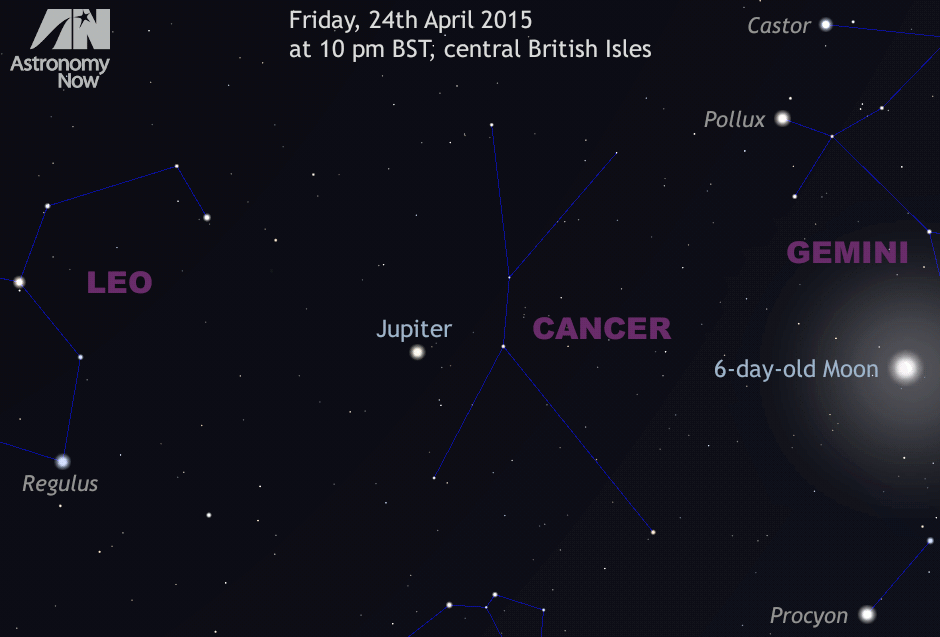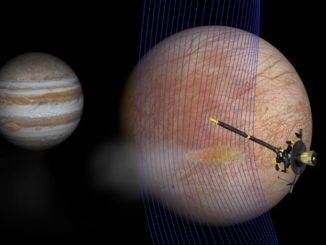
This does mean that Jupiter is also getting further away from us — 443 million miles at the start of April, 484 million miles by the end of the month — but the planet’s still big and bright in backyard telescopes. In early April, the Jovian disc will span some 40 arcseconds (about 90% of its largest size in February), diminishing to 38 arcseconds by month end, but that’s still larger than any other planet appears in the eyepiece other than Venus at its closest. To put that in context, a telescope magnifying 50x will still make Jupiter appear larger than our Moon to the naked eye.
Transits and shadow transits of Jupiter’s moons
One thing that you can always rely on with Jupiter is regular phenomena of the four main Galilean moons — Io, Europa, Ganymede and Callisto. As they orbit their parent planet we can see them pass in front of Jupiter (a transit, easier to see when the moon crosses a Jovian cloud feature of contrasting colour), or observe their shadows cast upon the planet (a shadow transit). Since the opposition of Jupiter has passed, transits of the moons precede their shadow transits. You can obtain predictions of these by using our online Almanac and ticking the checkbox labelled ‘Add phenomena of Jupiter?’ Important note: the Almanac’s Jovian phenomena is given in Universal Time (UT), so add one hour to the predictions at the telescope while daylight savings is in effect.
Great Red Spot (GRS)
Jupiter’s most enduring weather feature is an anticyclonic storm south of the planet’s equator that’s raged for at least the last 400 years. Our Almanac also gives you predictions of when it’s best seen. As a quick summary, observers in the British Isles can see the GRS on the evenings of 1st (see animation above), 3rd, 6th, 8th, 10th, 13th (with Io’s shadow), 15th, 18th, 20th, 25th and 27th April.
Mutual phenomena of the Galilean moons
Since Jupiter’s equator and the orbital planes of the Galilean moons are currently almost edge-on to our line of sight, we are able to witness somewhat rarer mutual events where the moons occult and eclipse each other — something that only happens twice in the planet’s 11.9-year orbit of the Sun. These events require a large telescope and good seeing to appreciate, but they are nonetheless fascinating to witness. Here are the events visible from the British Isles (weather permitting) throughout April 2015: Note: the times are given in Coordinated Universal Time (UTC), which is loosely synonymous with Greenwich Mean Time (GMT) unless very high accuracy (< 1 second) is required. Important note: add one hour to these UTC predictions while at the telescope as daylight savings is in effect.
Note: the times are given in Coordinated Universal Time (UTC), which is loosely synonymous with Greenwich Mean Time (GMT) unless very high accuracy (< 1 second) is required. Important note: add one hour to these UTC predictions while at the telescope as daylight savings is in effect.
Inside the magazine
You can find out more about Jupiter in the April edition of Astronomy Now in addition to a full observing guide to the night sky.
Never miss an issue by subscribing to the UK’s biggest astronomy magazine. Also available for iPad/iPhone and Android devices.




